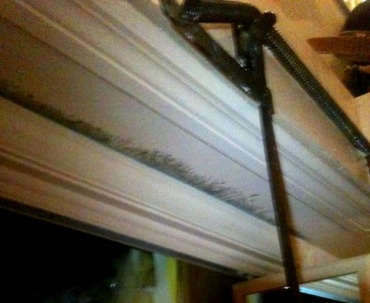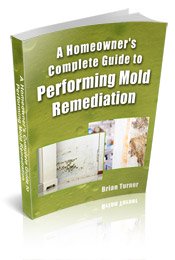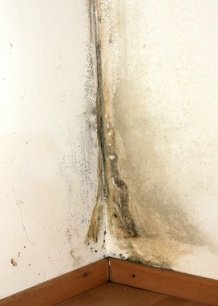Find a Mold Specialist Now
Click or Call, Toll-Free 24/7
How to Remove Black Mold
If you are wondering how to remove black mold, you are not alone. As we learn more about the health risks associated with black mold, more and more people are concerned and want to know how to eliminate black mold in their homes. People are concerned about removing black mold safely, since handling black mold can contribute to numerous health problems, but they also want to know how to do the job themselves in order to save money. Hiring a professional can be costly. We understand your concerns and we’ll tell you how to eliminate black mold safely, but we’ll also tell you when it’s better to call in a professional.
How to Remove Black Mold: The Basics
If you have black mold (which has a black, slimy appearance) growing on a surface such as a bathroom wall or floor, it is usually not too difficult to remove. Try these simple steps to eliminate black mold:
- Wear proper safety gear, including a respiratory mask and gloves, before starting your task. Consult with a mold removal professional if you need more detailed information about how to remove black mold safely.
- If black mold is growing on a hard surface, like a concrete or tiled wall or floor, scrub the entire surface area, including the area surrounding the mold, with a biocide designed to kill black mold. Follow the instructions on the package.
- If black mold is growing on a soft or porous surface, such as carpet, insulation or upholstered furniture, you’ll need to remove all moldy materials and replace them with new materials. Such materials simply cannot be adequately cleaned. In addition to knowing how to eliminate black mold on such materials, you’ll need to know how to replace the insulation, drywall or other materials if you prefer not to hire a professional for the job.
- Eliminate excess moisture from the room if possible. For instance, fix any leaky pipes and install a dehumidifier if necessary. If the area stays excessively damp, mold will grow back because it’s nearly impossible to remove every single mold spore from inside a home. If only a few tiny spores drift into the air and settle on a nearby surface while you are cleaning up mold, mold can begin to grow on that surface as long as there is sufficient moisture. It does you no good to know how to eliminate black mold if you cannot prevent it from coming back again.
Below is a picture of black mold above a closet on the trim.
When to Call in a Professional
The Environmental Protection Agency recommends calling a professional if you have mold covering an area greater than ten square feet. We also suggest contacting a professional for advice about how to eliminate black mold and/or assistance with the task if:
- You have mold growing in hard-to-reach places like inside your walls or inside your HVAC ducts or vents, or you think you might have mold in those places.
- You have mold growing on porous materials that cannot easily be removed and replaced, such as on the wooden studs inside your walls (a professional can encapsulate the mold so that even if it cannot all be removed, it cannot continue to grow or spread).
- You have no visible mold, but an area of your home smells musty (that usually means you have hidden mold).
- You have health problems, particularly asthma or other breathing problems, allergies, an autoimmune disorder or other problems with your immune system.
A mold removal professional can advise you about how to remove black mold from difficult areas and can tackle the job for you if you need professional assistance. Most mold removal professionals offer free consultations, so you can discuss your options and get some professional advice at no cost to you. Click Here for a list of mold removal professionals offering free consultations in your area.
Return From How To Remove Black Mold To Getting Rid Of Black Mold
Black Mold Health Symptoms Home Page







